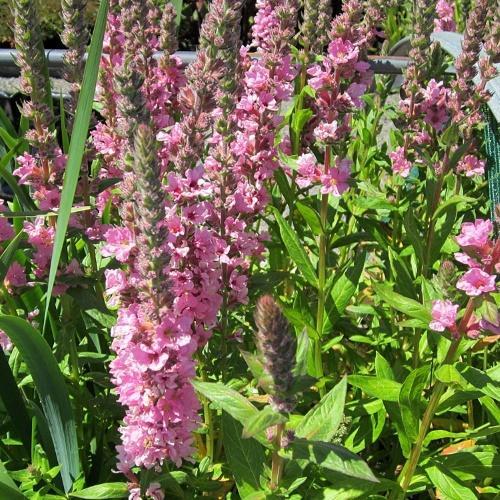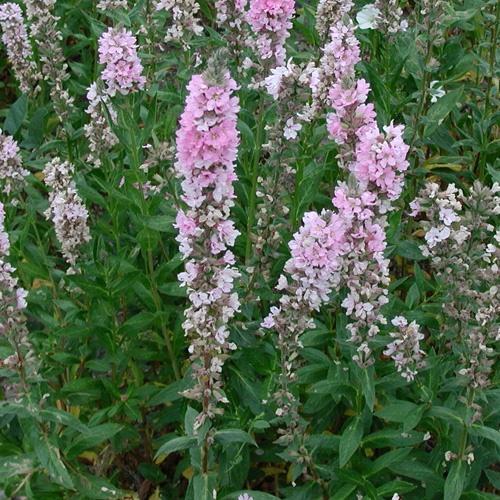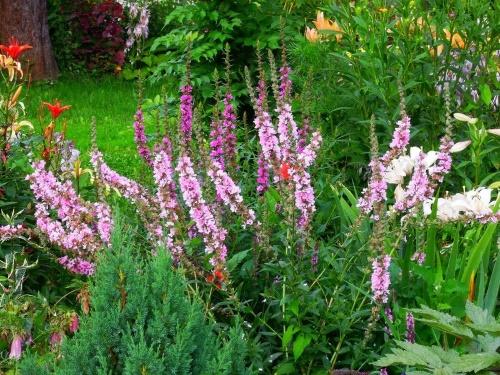Derbennik Blash - simplicity and elegance in your flower bed
 If you love simplicity and strive to preserve the naturalness of the flower bed as much as possible, plant a Blush Loose. It does not differ in special decorative qualities. Against the noble strict beauty of garden roses and the chic flowering of dahlias, the small inflorescences of the loosestrife lose. However, there is in them some special, gentle charm. Maybe it's a shy pinkish color, or maybe thanks to stuffed candles - peduncles this plant is increasingly found in gardens. Again, unlike roses, the loosestrife has an unpretentious character. It is not picky about care, it is not afraid of winter and wet soil.
If you love simplicity and strive to preserve the naturalness of the flower bed as much as possible, plant a Blush Loose. It does not differ in special decorative qualities. Against the noble strict beauty of garden roses and the chic flowering of dahlias, the small inflorescences of the loosestrife lose. However, there is in them some special, gentle charm. Maybe it's a shy pinkish color, or maybe thanks to stuffed candles - peduncles this plant is increasingly found in gardens. Again, unlike roses, the loosestrife has an unpretentious character. It is not picky about care, it is not afraid of winter and wet soil.
The loosestrife is known as "weeping grass". With an excess of moisture in the soil, the plant gets rid of it, secreting liquid. Water droplets run down the leaves and resemble tears.
Derbennik Blash - variety description

In the spring and summer, the foliage of the loosestrife is green, but with the arrival of autumn, it turns red.
At the beginning of summer, the bush produces a tall peduncle, densely covered with small, star-like, light pink flowers. A densely packed ear rises above the flower bed like a candle. In a group planting, the flowering of the loosestrife only benefits, creating a whole pink sea of such candles. They replace each other, and flowering lasts until autumn.
In addition to decorative properties, loosestrife is also an excellent honey plant. It is often sown near an apiary to produce an almost transparent fragrant honey with a slight tart note.
Growing and caring for a loosestrife in the garden
 The simplicity and subtle beauty of culture are not all of its advantages. The loosestrife can survive on any soil and in any place. But in order for the flowering to be abundant and long-lasting, it is necessary to find a sunny place for it, preferably by the water. Seeds can be sown for seedlings in March or directly in open ground in May.
The simplicity and subtle beauty of culture are not all of its advantages. The loosestrife can survive on any soil and in any place. But in order for the flowering to be abundant and long-lasting, it is necessary to find a sunny place for it, preferably by the water. Seeds can be sown for seedlings in March or directly in open ground in May.
Blush loosestrife care is minimal:
- Given the moisture-loving plant, in hot summer it needs to be watered regularly
- To prevent crust formation, it is advisable to loosen the ground after each watering.
- Weed weeding will provide planting space for development and growth.
- In the spring, at the beginning of growth, you can feed the bushes nitrogenbut without fanaticism.
In addition to the seed method of propagation, new bushes can be obtained by cuttings and dividing the bush. It is better to take cuttings in early summer by cutting off a branch at the root.A rooted cutting can be planted in a permanent place at the beginning of autumn. But it is desirable to divide only young bushes. Older specimens have strong woody roots that are difficult to break.